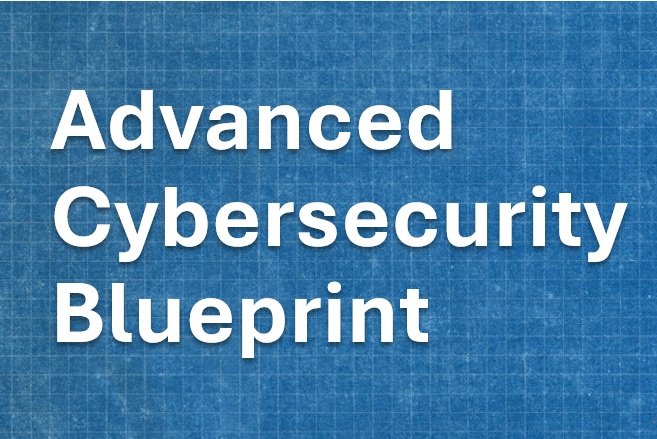Unified Communications’ Next Wave
Here’s how to help cash-conscious SMBs navigate the waters of unified communications—from messaging, to telephony, to collaboration, and beyond.
By Carolyn Heinze
 Anyone who has worked with SMBs is familiar with their resource-related challenges, especially when it comes to money and talent. And anyone who has tried to sell something to SMBs is also conscious of the high priority they place on simplicity.
Anyone who has worked with SMBs is familiar with their resource-related challenges, especially when it comes to money and talent. And anyone who has tried to sell something to SMBs is also conscious of the high priority they place on simplicity.
Arguably, an SMB’s need for simplicity is greatest in the realm of communications. As the lifeline between the business and its customers, vendors, and partners, communications technology is not only mandatory, but it often makes the difference in how competitive a company is capable of being. As unified communications (UC) continues to expand from the enterprise space into mid-level and smaller organizations, an increasing number of SMBs are gradually exploring how these systems can boost efficiency, productivity, and in the end, sales.
“SMBs want to reduce the total number of vendors that they have to work with,” observes Bern Elliot, research vice president at Gartner Inc. In addition, when it comes to communications, SMBs are seeking to reduce the cost of the overall package, if possible, while increasing functionality. “Unified communications has a dual-pronged approach [for providing] this,” says Elliot. “One prong is paying less for what you already have, and the other prong is adding things that you think are going to be useful that you don’t have.” While the overall cost may not always decrease, the added feature sets can pay off by boosting efficiency, which translates into savings down the line.
Katherine Trost, analyst at Nemertes Research, notes that a number of years ago, UC in the SMB market was mainly about unified messaging. “In the last couple of years, our clients have been talking about starting with IP telephony as their base, and then integrating other forms of collaboration and communication,” she explains. “We really look at it more as an overall architecture that pulls in various modes of communication and collaboration.” With the presence dashboard acting as the glue, she adds, it’s not really about the individual applications themselves, but how they are integrated to enable access to each other, from one another.
UC AT A GLANCE
Unified communications encompasses five main categories: telephony (including landlines, mobile phones, and Voice over IP); conferencing (audio, video, and Web-based); messaging (voicemail, email, instant messaging, and presence); the client (thin Web clients, mobile clients such as smartphones, widget clients, or clients that are embedded into applications); and integration of UC functionality with other business applications.
Intermedia, a hosting solutions provider headquartered in New York, has been servicing the SMB market for the last 15 years. Jonathan McCormick, Intermedia’s chief operating officer, notes that SMBs are focusing on four core UC components: email (and inside of email, calendar functions), instant messaging, wireless integration, and telephony. “They have to be nicely integrated into a single desktop application that allows you to use all of them together very efficiently so that you can display things like presence, or have one inbox that displays all of your messages and voicemails,” he explains. “Those are the elements that are the most important to small businesses.”
Robert Molinaro, vice president at Chorus Communications Inc., a technology and telecommunications consulting firm based in Philadelphia, notes that his SMB clients are most interested in workflow applications and CRM software, and how they integrate with services such as Microsoft Exchange. An Alteva partner, Molinaro notes that carriers such as Alteva are incorporating those technologies into a platform, enabling them to be pushed out to customers in a different way than in the past.
“Every time a new feature comes about, it’s pushed to the client as another application they can onboard vs. the old-school way of pulling the feature,” says Molinaro. “Certainly, you can do that on your existing premise-based system, but you need to upgrade to this, that, and the other thing in order for it work at a cost of X.” Now, customers can adopt what Molinaro refers to as a shopping-list mentality: “You can take what you need and leave behind what you don’t.”
McCormick concedes that until recently, one of the problems with UC at the SMB level is that it wasn’t delivered well as a service. “Almost all of the communication involved very large, complex, on-premise integration of multiple, disparate technologies for large enterprises,” he says. “That is why it hasn’t been such a big hit in the SMB marketplace, because there hasn’t been anybody that delivers it as a service, which is what we’re starting to do.” When delivered as a service, UC can be packaged at a per-user, set rate. “That’s something SMBs appreciate: being able to budget for a fixed rate throughout the year.”
The pay-as-you-go business model is starting to take root, says Henry Dewing, principal analyst at Forrester Research. “Almost across the board I am seeing a preference for an operating expense as opposed to a capital expense,” says Dewing. “People want to make monthly payments as opposed to making an up-front investment.”
SOLUTION SELLING IS KEY
Gartner’s Elliot counsels channel partners to focus less on selling the various UC technologies and more on the solutions they offer SMBs. “You want to go in solution selling, with scenarios that the users understand,” he says. These scenarios should be role-based: This UC solution will enable the traveling salesperson to perform this function, while it will allow top-level partners who need to be in constant contact with one another to benefit from this other feature. “This way, the user doesn’t have to make a decision that involves mixing and matching; what they’re doing is making a decision based on which functions they need.”
Trost of Nemertes Research suggests that channel partners focus the sales discussion on what the customer requires in terms of collaboration, and how that collaboration can be made easier. SMBs are dispersed, she notes, with many having multiple branch offices. So it’s important to be aware of how often the client needs to communicate with internal contacts vs. external customers.
While the economic recession resulted in a significant number of UC deployment projects being put on hold, Trost says some UC rollouts are starting up again as budgets are loosening up. “What’s happened is that companies step back and say, ‘We’re not going to be able to do a full UC rollout with a dashboard so that we can integrate all of the pieces at this time. What pieces make most sense to roll out today?'” she illustrates.
This tactical approach often includes videoconferencing, which produces a rapid return on investment. “If they can argue that they will cut down on, for example, 120 business trips a year just by installing a videoconferencing system, it’s an easy thing to push through the budgeting process,” notes Trost. On the other hand, even though it increases productivity, it’s more difficult to assign an ROI dollar amount to a presence dashboard featuring “find me, follow me” functionality. “It’s something that you have to put in place first and then you can go back and say, ‘We saved so much on productivity,'” she says.
One way to help SMBs avoid the outlay of a large capital expense is to propose a UC “test drive” through hosting. “Once they are using a hosted OCS [Microsoft Office Communications Server] or a hosted Exchange environment,” says Trost, “they can take a step back a year later and see, ‘How much was this used? What pieces did we use? Is this something we should maintain as a hosted option, or should we bring it in-house?'” In many cases, she notes, they will remain with the hosted UC model because of its ease of use, cost-effectiveness, and increased efficiencies.
“Software as a service always makes sense—it’s one of those things that you can easily prove on paper,” says Intermedia’s McCormick. “It’s more cost-effective and you always get better performance of the products being delivered than you could run in-house because you have experts running them.” Unified communications delivered as a service is just another form of software as a service (SaaS). “When times get tough economically, companies are pressured even more for cash, and so outsourcing or purchasing technology as a service makes sense because you don’t have to worry about your cash flow, in terms of capital outlay, quite as much.”
Molinaro notes that SMBs are coming to Chorus Communications with a few goals in mind: to reduce spending while increasing technological functionality, including taking advantage of the scalability that’s available. They also want to remain nimble. “They don’t want to have to make a decision today based on thinking too hard about where they’re going to be five years from now,” he says. In a hosted environment, the customer doesn’t have to worry about making a mistake when projecting for the future. “If they have 50 people working for them today, and business increases in two to three years, they can add 20 more seats at the click of a mouse,” says Molinaro. “If things go the opposite way, they can reduce two or three administrators at the click of a mouse.”
OPPORTUNITIES IN UC
According to Nemertes Research, 67 percent of companies have either cut their IT staff or put a freeze on expansion. Those that cut IT talent did so by 17 percent. This has opened up a considerable opportunity for channel partners to offer managed services for VoIP. “Organizations of all sizes lack the staff with the skill set to support IP telephony,” Trost says. “IP telephony is one of those areas where we are finding a shortage in IT talent. Also, they don’t want to waste their staff’s time if it’s more of a commodity service, such as monitoring a solution.” It’s preferable, in this case, to outsource IP telephony.
Another big opportunity for channel partners is integration, since one of the main challenges that SMBs face is adapting UC to fit with current business processes and applications. “A service provider that can go in there and talk about it, and that can support integration into all different types of legacy systems and other IP telephony and UC solutions—that’s who’s going to win the business,” says Trost.
A couple of years ago, it was the IT departments that drove the demand for UC, and Trost notes that these days, the business units within organizations are increasingly driving interest in unified communications. She believes that this trend is the result of what’s been happening in the consumer realm. “Instant messaging, social networking, Skype, and video desktop conferencing—we are all using these options at home, and we’re much more comfortable using them,” she says. “We are seeing professionals coming to the IT department and asking: ‘Why don’t we have this here? Why don’t you support this here?’ The demand is changing.”
So, too, are the conversations that channel partners are having with their UC customers. Now, it’s not just the IT department that’s involved, but C-level professionals and business team leaders as well. Trost notes that the industry will witness even more of this as younger employees start to rise through the ranks. “The way the younger generations communicate today is completely different than what we were doing 10 years ago,” she points out. “That demand for unified communications—any time, any device, anywhere access—is going to grow.”
For UC to continue grow in the SMB marketplace, however, channel partners need to be ready to deliver it as a full-service offering, says McCormick. That means providing everything from sales support to installation of phones and clients, and ongoing support not just through the hosted service, but also through the telephone company on the back end that’s charged with delivering all of the telephony services.
“If you can’t wrap a full-service offering around it, it’s going to be really hard to be successful, and it’s going to be hard for small businesses to take advantage of,” McCormick emphasizes. After all, the reason SMBs need unified communications as a service is because they don’t have the time or the skill set to manage the complexity of the technology. “You really need to be able to deliver it to them as a complete, end-to-end service.”
[Related Story]
Synching Up
One of the main challenges in deploying a UC solution is dealing with a customer’s existing services. The company may be oversubscribed on certain phone line connections, or it may not have paid attention to the evergreen clauses in many of the standard agreements. Additionally, there may be no synergy between the firm’s T1 contract and, for example, its email contract—one may expire faster than the other.
“In this collaboration that we are moving to, unified communications encompasses all of those things,” says Robert Molinaro, vice president of Chorus Communications Inc., a Philadelphia-based technology and telecommunications consulting firm. “The customer is stuck with a golden handcuff situation, and instead of doing the whole thing, which is where most of the economies of scale sit, we’ve got to do it piece-by-piece.”
Another issue results when phone numbers need to be changed over, observes Steven G. Stemkowski, executive account manager at The VoIP Co. LLC, a hosted PBX and VoIP provider and Intermedia reseller in New York. “In some cases, this takes a bit of time,” he says. “It needs to be planned out carefully.”
CAROLYN HEINZE is a freelance writer/editor.














